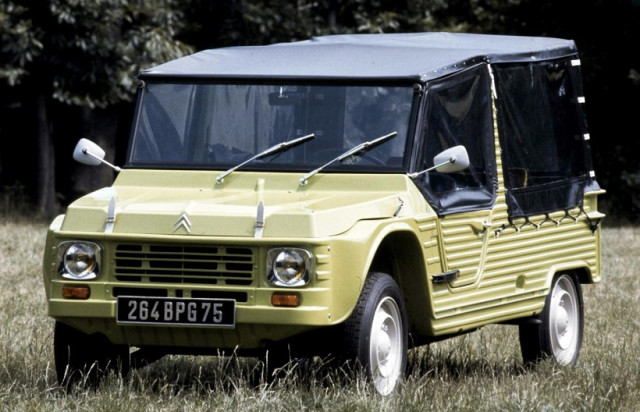

Citroën is marking the 45th anniversary of one of its much-loved models – the Méhari. The Diane 6 Méhari, as it was originally known, was first unveiled on 16 May 1968 in Deauville, France. An unpretentious car built for utility and pleasure, it was designed to be equally at ease transporting hay or surfboards.
The Citroën Méhari was created by Roland de La Poype, who was a French fighter ace during World War II and a successful industrialist in the post-war period. The Méhari carried over the versatility and economy of the 2CV, while featuring more contemporary materials. The innovative lightweight body, moulded in ABS (Acrylonitrile Butadiene Styrene) was extremely malleable and could be vividly coloured. The Méhari’s other key characteristic was that it could be fully opened above the waistline, including the windscreen, which folded down onto the bonnet.
Almost 150,000 examples were produced between 1968 and 1987. There was even a 4WD version launched in 1979. Just two special editions were released – the Méhari Beach (in Spain) and the Méhari Azur (in France, Italy and Portugal). The Méhari Azur was produced in white with blue doors, grille, canvas roof and headlamp surrounds, plus white and blue striped seats.
Citroën Méhari models took part in the Liége-Dakar-Liège rally in 1969, the Paris-Kabul-Paris rally in 1970, the Paris-Persepolis-Paris rally in 1971 and provided medical assistance in the 1980 Paris-Dakar. The Méhari was even used by the French army as its lightweight design made it easy to parachute drop the car behind enemy lines.
The model’s name – Méhari – comes from a word used in North Africa and the Sahara for dromedary camels whose speed and endurance makes them ideal for the tough conditions in the area, enabling them to transport people and goods.
To celebrate the occasion, a special area at Citroën’s C_42 showcase on the Champs-Élysées in Paris has been dedicated to key moments from the Méhari’shistory.
